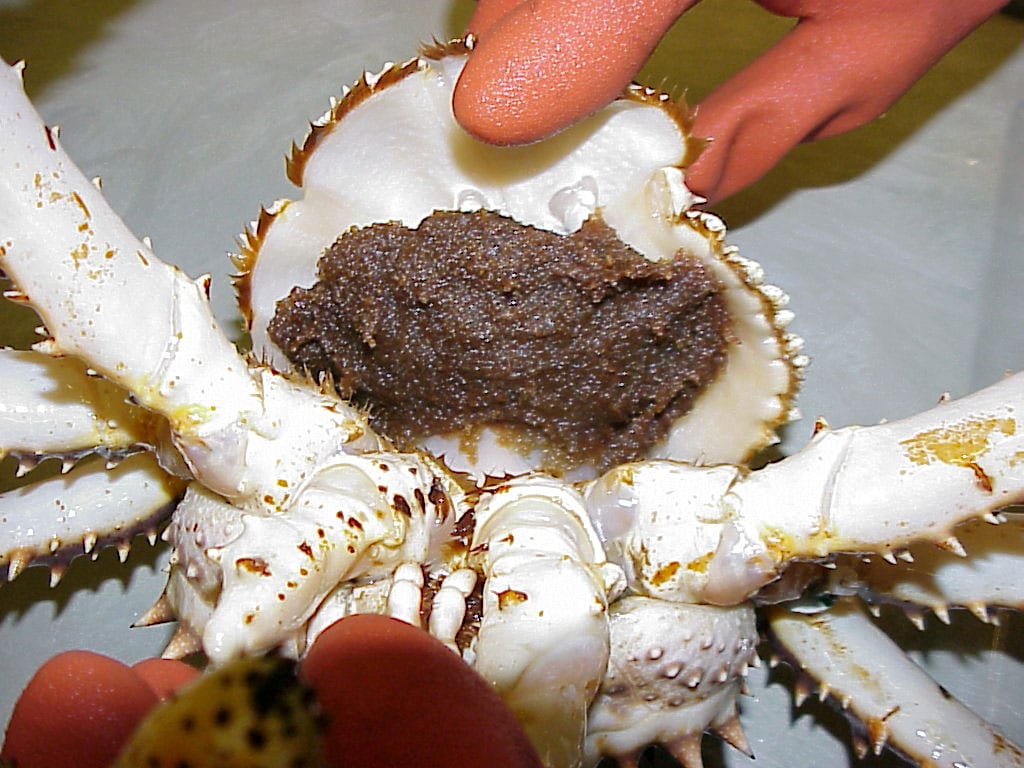Crab eggs are truly fascinating specimens of nature. These tiny eggs hold the next generation of crabs within their delicate shells. When looking closely at crab eggs, you’ll notice some unique characteristics that help the eggs survive in their ocean environment.
Identifying Crab Eggs
Crab eggs are very small, often less than a millimeter wide. They are usually laid in large clusters or masses on the underside of the female crab. The eggs are held together with a sticky substance that keeps them attached to the crab as she swims around.
The eggs are round or oval-shaped. Their color can vary between crab species, but they tend to be yellowish, orange, or brownish. The eggs of snow crabs and king crabs have a bright coral hue.
Under a microscope, you can see the tiny crab embryo developing inside each little egg. The embryos often have eyespots and a curled up body.
Crab eggs look somewhat similar to fish eggs, but crab eggs are more elongated while fish eggs tend to be perfectly spherical. Crab eggs also remain stuck together in a mass rather than scattering individually like fish eggs.
Where Are the Eggs Located?
Female crabs carry hundreds of thousands of eggs at a time. The egg mass looks like a spongy matrix covering the underside of the crab’s body. Crabs have a flap-like structure called the apron between their legs, and this is where females attach the eggs.
Carrying the eggs under her body allows the female crab to constantly groom and care for the eggs as they develop. The female will fan water over the eggs to keep them oxygenated. She also vigilantly picks away debris and parasites that could harm the eggs.
Egg Development
The crab embryos take several weeks to develop inside the eggs. The length of development depends on factors like water temperature and the crab species. For example, rock crab eggs may hatch in just two weeks, while king crab eggs can take five or six months to develop.
As the embryos grow, the eggs become darker. Right before hatching, you may be able to see the baby crabs wiggling around inside the translucent eggs. When ready, the baby crabs synchronize their hatching and all emerge at once. They immediately become independent juveniles who look just like tiny versions of the adults.
Protecting the Eggs
The female crab takes great care to protect her eggs during the long incubation period. One unique defense mechanism is to wrap strands of algae, seaweed, or other vegetation around the egg mass. This camouflages the eggs to look like just a piece of drifting debris.
If the mother crab is threatened, she may also choose to detach the entire egg mass and leave it behind as she flees. By sacrificing the eggs, she can escape danger and potentially reproduce again later.
Human Consumption
Many species of crab are popular menu items for humans. You may encounter crab eggs if you eat female crabs during breeding season. The orange or yellow egg mass is completely edible. The eggs have a satisfying pop when you bite into them!
However, some people dislike the taste of the egg mass and will pick it off before eating the rest of the crab. The eggs are also very high in cholesterol, so they should be eaten in moderation.
Fascinating yet Fragile
Crab eggs are truly marvels of nature. Their delicate shells house the next generation of crabs swimming their way through the ocean depths. With a little luck, the tiny embryos in the eggs will survive to hatching and continue their species’ life cycle.

developing horseshoe crab eggs
FAQ
What do female crab eggs look like?
What Colour are crab eggs?
Can you eat crab eggs?
Where do crabs put their eggs?
